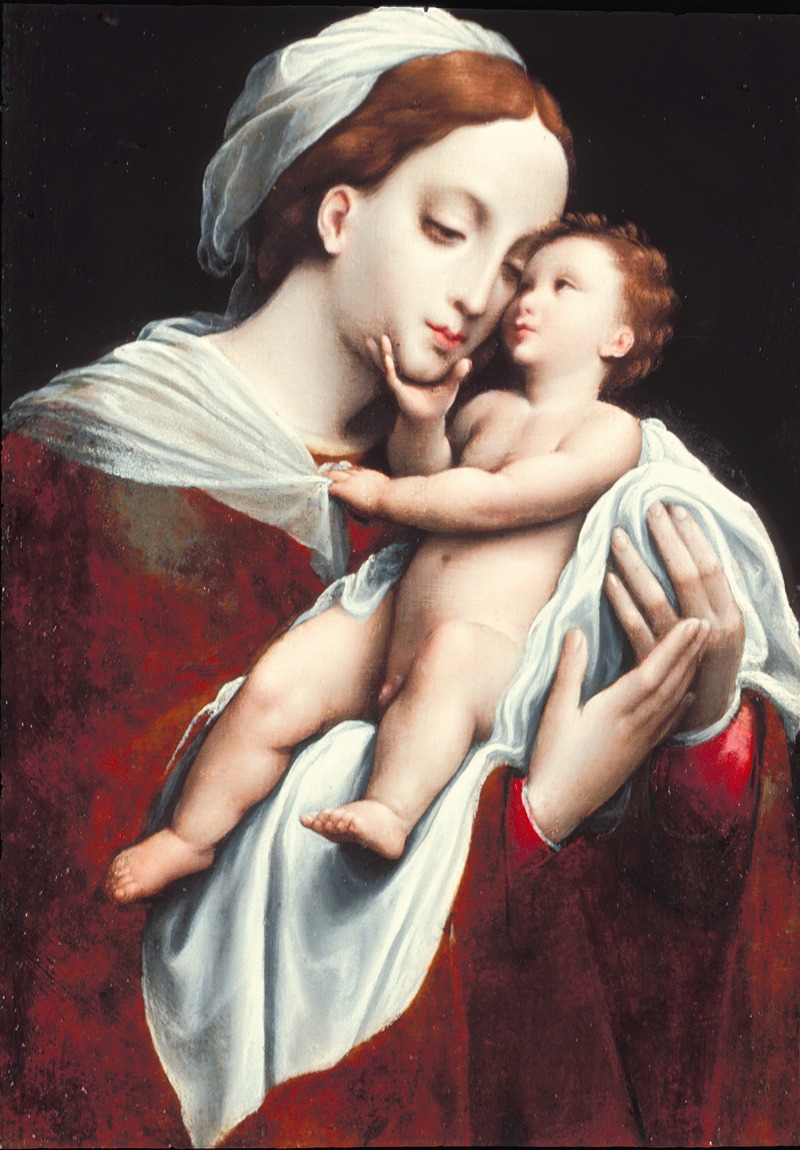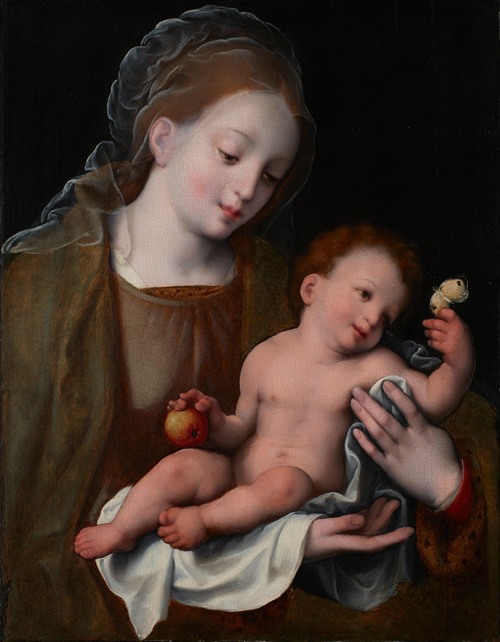
Cornelis van Cleve, Cornelis van Cleef or Cornelis van der Beke, nickname Sotte Cleve ('Mad Cleve') was a Flemish Renaissance painter active in Antwerp who is known for his religious compositions and portraits. Starting his career in Antwerp in the workshop of his father Joos van Cleve, he later worked for a while in London. When he failed to achieve success in England, he became insane and stopped painting.
He was born in Antwerp as the son of Anna Vijdt and Joos van Cleve, a prominent representative of the 16th-century Antwerp school of painting. Little is known about his training but it is believe he trained in his father's studio. Some details of his life have become mixed up with those of his father. It was believed previously it was his father who became mad and was given the nickname 'Sotte Cleve' ('Mad Cleve'). However, the current view is that it was Cornelis who became mad.
Cornelis was a proficient helper in the studio of his father, probably from 1535 to 1540. It is not clear when Cornelis van Cleve became a master in the local Guild of Saint Luke. As the son of a master he did not need to register as a pupil with the Guild. He may have become a master in the Guild year 1540-1541 during which his father died. The records of the Guild for that year are lost. He seems to have been a struggling artist. There are reports that in 1546 and 1547 he had difficulties making payments on his house. This is likely the reason why he sold the house in 1555 and emigrated to England. An additional reason may have been that he harbored Protestant sympathies, as may be surmised from the name of his daughter Abigael.
The artist likely went to England to seek the patronage of Philip II of Spain who had become the joint ruler of England after his marriage to Mary I of England. The madness was reportedly caused by a conflict between Cornelis and the prominent portrait painter Anthonis Mor. He had asked Mor to plead on his behalf with Philip II to give him commissions but Mor's intercession had been unsuccessful. This episode caused the artist to become insane.
It is not clear when the artist died. Estimates place the time of his death between 1567 and 1614.



